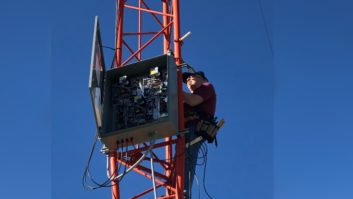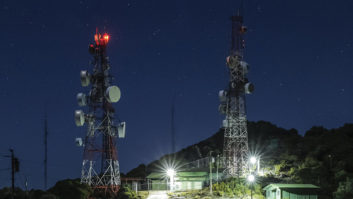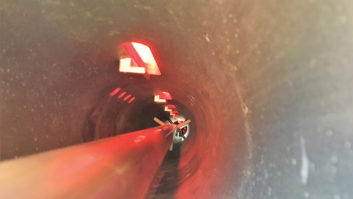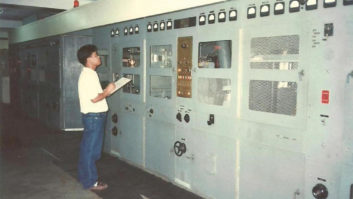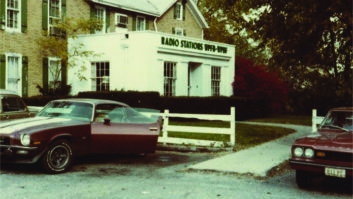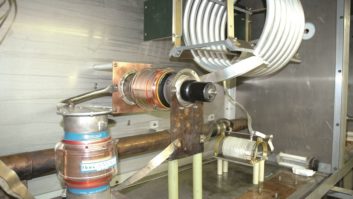Solid-state tower lighting
Jan 1, 2002 12:00 PM, By John Battison, P.E., technical editor, RF
For towers that require incandescent lighting, regular tower-light inspection and maintenance is a task that tower owners must undertake. Broadcasting’s early days saw many station engineers climbing the tower themselves. The greater availability of qualified tower climbers has turned this into a regularly occurring event. Regardless, the problem of changing a burned-out lamp still remains, tower climbers don’t come cheap, and tower lights seldom fail at a convenient time.
I wouldn’t go so far as to say that the days of incandescent tower lighting are numbered, but I think the writing may be on the wall. Two major companies are offering solid-state lighting equipment for broadcast towers. At first glance, it seems unreal to consider solid-state light emitting diodes as replacements for the beacon and sidelights on a broadcast tower. However, there is power in numbers.
Solid-state tower lighting is designed to be a direct replacement of the incandescent counterpart.

Dialight and Honeywell, alliance partners for the distribution of Dialight LED products, now offer side-mount tower lighting fixtures that are available in steady burning or flashing format. Both companies offer replacement sidelight and obstruction light units. In addition, Dialight has produced a beacon assembly that uses high-performance LEDs in place of the original incandescent lamp bulbs. Both install in place of the existing incandescent lamp beacon or sidelight, and can use the wiring that is already in place with no or minor modification.
Off the top and sides
Dialight’s LED technology offers a range of lighting products that operate over a broad voltage range from 12vdc through 220vac. With a current upper limit of one amp and a total wattage of less than 100 watts, depending on the voltage used, as little as 10% of the equivalent incandescent power is required.
Among the good features of LEDs is the fact that cold does not affect them in the way that it can damage incandescent lamps. Extreme cold and moisture can crack the glass of a regular lamp, stress the filament, corrode contacts and create difficulty in changing units. LEDs continue to function regardless of weather conditions and are expected to outlast incandescent bulbs by many years.
The obstruction light uses 16 LEDs, which provide light output in accordance with FAA requirements. The epoxy encapsulation of the LED provides a primary light beam, and a separate assembly cover has a bulge that forms a Fresnel lens to concentrate the light horizontally. An interesting human convenience feature is the provision of three upward shining LEDs, which are viewable from above. This is to confirm to an observer further up the tower that the light is operating properly and provides the familiar appearance that we have come to expect from a properly working sidelight.
Each obstruction light unit is self-contained, except for the primary power input. When installing one, it is only necessary to remove the old unit, install the new unit in accordance with the instructions and connect it to the primary power. The power supply is contained within the light housing. Either steady- or flashing-light operation is available depending on FCC license requirements, and this option does not require any external connections other than power and the usual flash controller and photo cell.
The initial hardware cost for LED installation is greater than that for incendescent installation, but the savings is quickly realized in the reduced power consumption and longer lifespan.

The LED system is remarkably resistant to static charges and lightning strikes. Protection against lightning strikes and power line surges is afforded by ferrite cores on power interfaces, proper grounding and shielding, and proprietary protection techniques. The radiation of internally generated spurious RF signals is prevented by shielding the encapsulated power supply. This makes this light suitable for receiving installations where high sensitivity receivers are in use.
LED tower beacon
The top of the tower is the hardest point for a climber to reach, and anything that reduces the number of trips up and down the tower is worth having. LED beacons are designed to be resistant to lightning strikes and other static surges that could burn out a regular lamp filament. However, the LED assembly in a beacon is guaranteed to meet current FCC light output specifications for a period of five years. At this time, the light output will still be usable but may be at the low end of the specified limit.
If one of the two LED lamps in the beacon should fail, its demise will signal the other lamp to shut down also. This action produces an alarm signal, which will be communicated to the station monitoring system for proper FAA notification action. In actual operational conditions, installing an LED beacon is almost a plug-and-play situation.
Protection against electrical surges and voltage spikes exceeding 250 volts, with currents as high as 12,000 amps, is provided by the use of MOVs and careful grounding.
The power supply is incorporated in the design of the beacon and is mounted inside the beacon’s array of LEDs, directly behind the LED mounting so that nothing is external to the beacon assembly. The beacon works with an external, installation-provided control and flasher components.
Fortunately, faulty beacon service does not involve finding and replacing the faulty LED among the 640 LEDs used in the beacon. It’s not like a Christmas tree light string, where if one goes, they all go. It is only necessary to replace the faulty LED assembly with its built-in power supply to restore full service.
The modules are not intended for end-user servicing. If failure occurs, the faulty module is returned to the manufacturer for replacement. The use of encapsulated and fully-shielded power supplies makes local repair impractical. Another advantage of encapsulation is better cooling. Air is not the best cooling media, and solid sealing material carries heat away better than plain air.
Faulty power supplies are discarded by Dialight. They are so epoxy potted that even the manufacturer can’t open and repair them.
The use of LED lighting is growing. Airports are now using LED taxiing and runway lights. Brake lights on vehicles have adopted them. Traffic signals are even being upgraded to solid-state. The humble diode has come a long way from the original crystal detector and a cat’s whisker. We wonder today what will be the next item whose appearance and operation is changed by electronic excitation.





